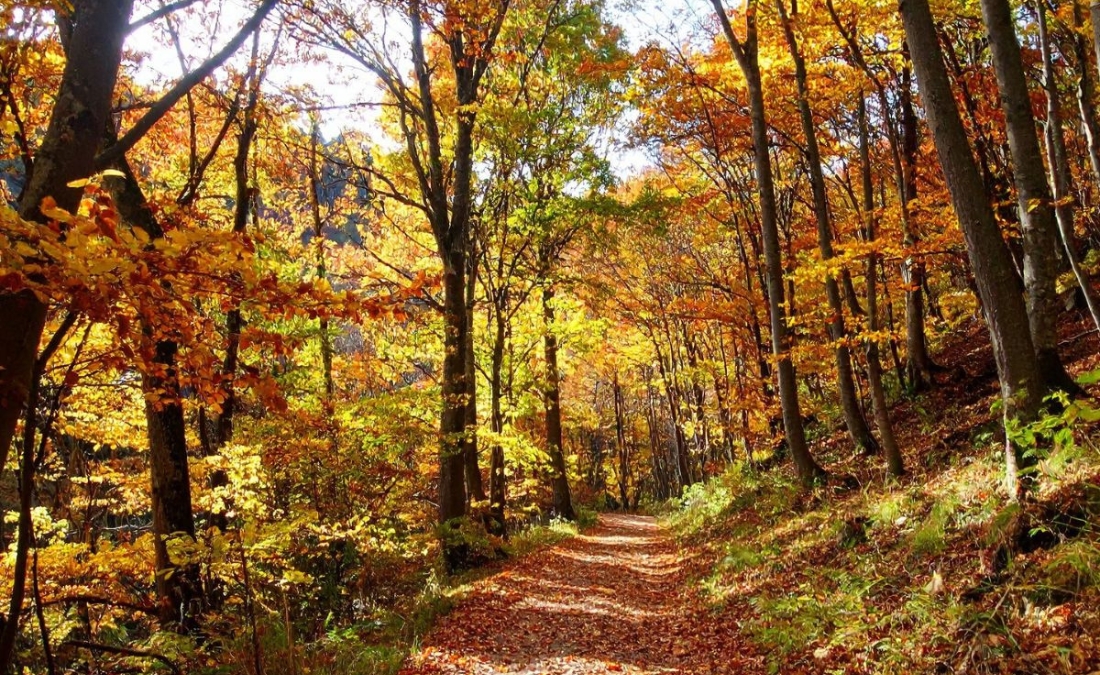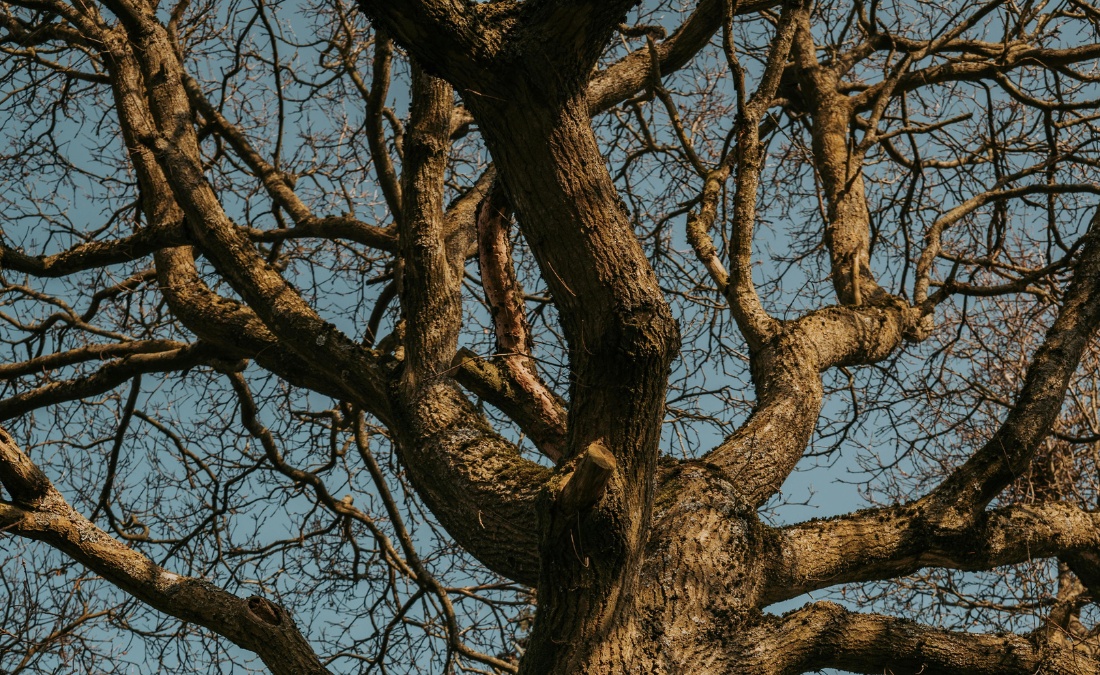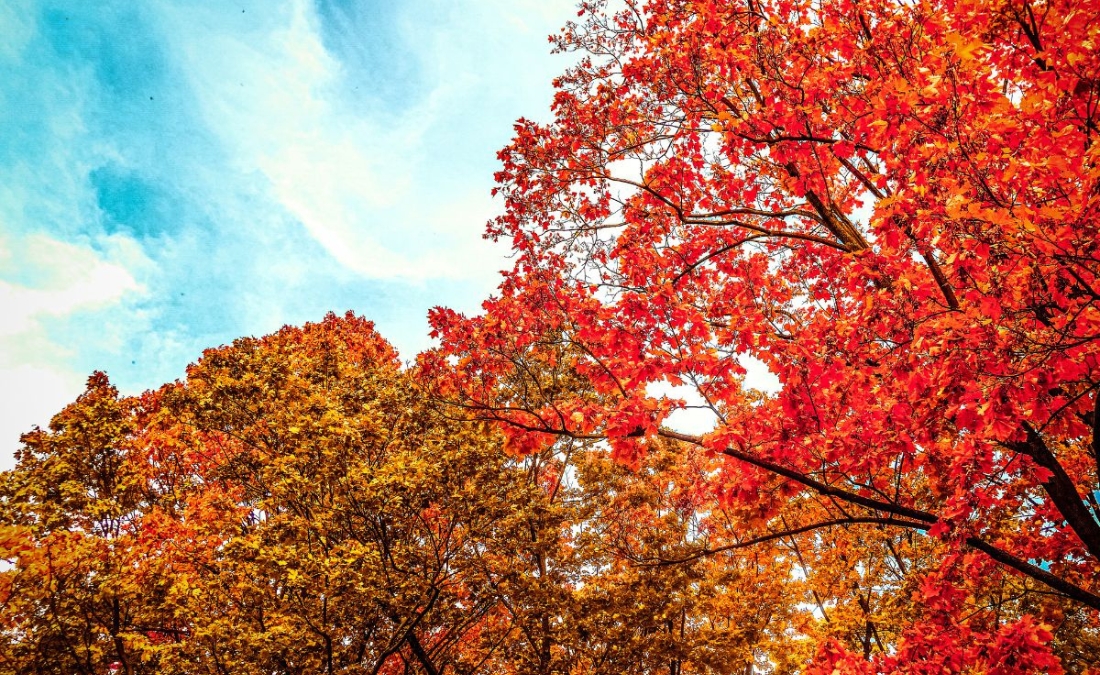Tree Removal vs. Pruning: Making the Right Choice for Your Quad Cities Property
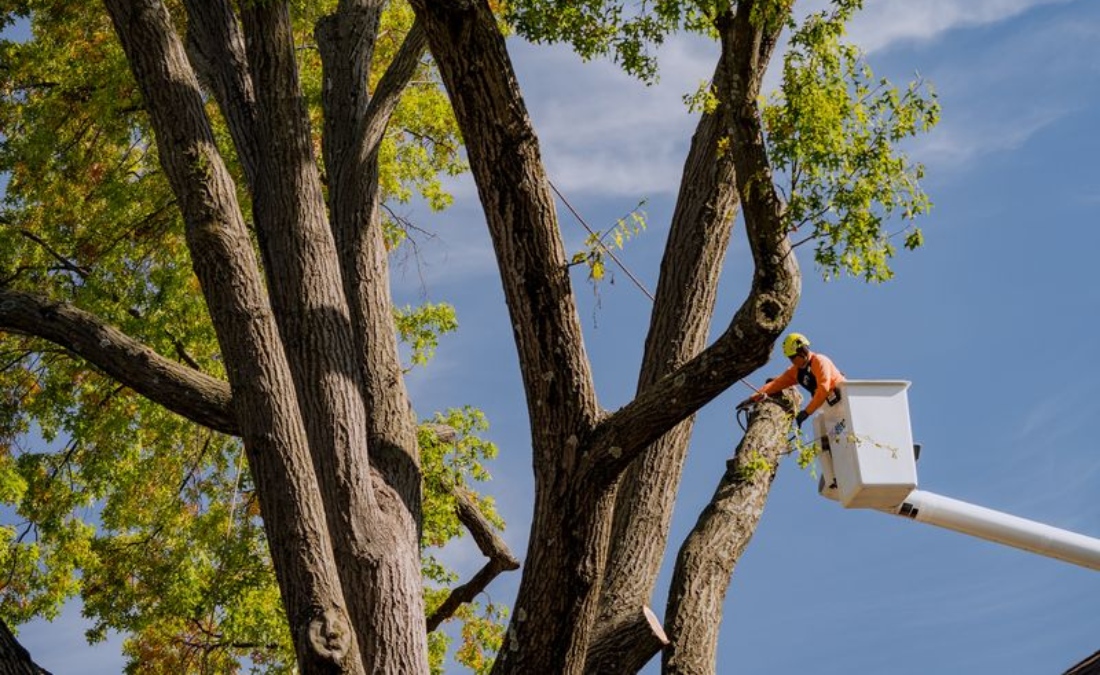
Learn when tree removal vs. pruning is right for your Davenport property. Expert ISA arborist guidance on making preservation-first decisions that protect your home and investment.
You’re standing in your yard on a crisp November morning, looking up at the mature oak that’s shaded your McClellan Heights home for decades. After last week’s windstorm though, you’re noticing a sizeable crack in the trunk, some leaning, and several large branches that look precarious. The question: can this tree be saved, or does it need to come down?
This is one of the toughest decisions Quad Cities homeowners face. Trees in historic neighborhoods, like Hamburg, Vander Veer Park, and Bettendorf, aren’t just landscaping; they’re irreplaceable assets that took generations to grow. The good news is that you don’t have to make this decision based on guesswork. This guide will show you exactly how to evaluate tree removal vs. pruning for your specific situation, so you can protect both your family’s safety and your property’s value.
Key Takeaways
- Many tree problems aren’t visible without professional assessment, making ISA Certified Arborist evaluation essential for determining whether your tree can be saved through pruning or needs removal for safety.
- Trees with less than 25% damage can usually be saved through pruning, while those with over 50% damage, significant trunk hollowing, or severe lean typically require removal.
- Oak trees must be pruned between December and February to prevent oak wilt transmission, while most other species are best pruned in late winter through early spring.
- After storm damage, quick professional evaluation within 24 to 48 hours improves recovery outcomes and helps determine whether damaged trees can be saved or need removal.
Should You Remove Your Tree or Prune It?
In most cases, trees showing healthy structure, green growth, and limited damage can be saved with pruning. Removal is typically necessary only when a tree poses a safety risk, is severely decayed, or cannot recover from storm, pest, or structural damage.
Use this quick reference guide to determine whether your tree situation typically calls for removal or pruning. Keep reading for more context and details about the factors influencing your decision. It’s also important to note that professional assessment is always recommended for complicated or unclear situations.
| Tree Condition/Problem | Removal Likely Needed | Likely Saved With Pruning |
|---|---|---|
| Tree leaning more than 15° from vertical | ✓ | |
| Sudden lean with soil heaving at base | ✓ | |
| Vertical cracks or splits in main trunk | ✓ | |
| More than 50% of crown damaged or dead | ✓ | |
| One-third or more of trunk hollow/rotten | ✓ | |
| Dead branches over walkways, driveways, play areas | ✓ | |
| Major root system damage (>50% affected) | ✓ | |
| After derecho or major storm (>50% crown loss) | ✓ | |
| Two main trunks of similar size (co-dominant leaders) | ✓ | |
| Branches growing at narrow angles (<45°) | ✓ | |
| Crown weight imbalanced to one side | ✓ | |
| Less than 25% crown damage from storms | ✓ | |
| Crossed or rubbing branches creating wounds | ✓ | |
| Early-stage oak wilt (caught quickly) | ✓ | |
| Localized pest infestation (caught early) | ✓ | |
| Scattered dead branches (stress indicators) | ✓ | |
| After ice storm with moderate damage | ✓ | |
| Overgrown, blocking views or solar panels | ✓ | |
| Branches touching roof, gutters, or siding | ✓ | |
| Too much shade for lawn growth | ✓ | |
| Power line clearance needed | ✓ | |
| Tree outgrown its intended space | ✓ |
Important timing note: If your oak tree needs pruning, it must be done between December and February to prevent oak wilt transmission.
How Do You Know If Your Tree Needs Removal or Just Pruning?
Tree pruning is the selective removal of branches to improve health, structure, or appearance. Tree removal, of course, means taking the entire tree down. The distinction matters because skilled pruning can often save trees that look beyond help – but critical issues, like interior decay, girdling roots, and early-stage diseases, aren’t visible from the ground. That’s why professional assessment is so essential for difficult decisions.
And while each situation is a little different, there are some commonalities that can help give you a better idea of your tree’s condition and the next steps to take.
What Tree Problems Require Immediate Removal?
Some conditions present clear dangers that no amount of pruning can address:
- Severe lean (more than 15 degrees from vertical, especially if sudden)
- Major trunk damage (vertical cracks, deep splits, wounds compromising more than half the trunk)
- Extensive storm damage (50% or more of canopy destroyed)
- Hollow trunk (one-third or more hollow or rotten)
- Dead branches over high-traffic areas (walkways, driveways, play areas)
In places like McClellan Heights, where steep terrain makes unstable trees particularly dangerous, these situations require immediate professional evaluation.
What Structural Problems Can Pruning Fix?
Many structural problems that look serious can actually be corrected, thus saving your tree:
- Co-dominant leaders (two main trunks) can be pruned when young or cabled when mature
- Narrow branch angles (less than 45 degrees) can be corrected through selective pruning while branches are small
- Crown imbalance can be restored through crown reduction pruning
- Moderate storm damage (less than 25% of canopy)

Can Diseased or Pest-Damaged Trees Be Saved?
Yes, if caught early. The key is whether the problem is still localized or has become systemic:
- Early-stage diseases often respond well to treatment combined with pruning to remove affected branches
- Localized pest infestations (like Emerald Ash Borer) can be treated when caught early
- Branch dieback from stress can often be reversed with pruning and proper care
Can Storm-Damaged Trees Be Saved?
After ice storms or wind events, like the 2020 derecho, the 25%/50% damage rule helps determine whether your tree can be saved:
- Less than 25% crown damage: Most trees recover with proper pruning.
- 25% to 50% crown damage: Recovery depends on tree’s age and health.
- More than 50% crown damage: Recovery unlikely, especially for mature trees.
Before assessing damage levels, safety comes first. Stay away from trees touching power lines and call your utility company immediately. For other damage, have an ISA Certified Arborist assess within 24 to 48 hours for best recovery outcomes.
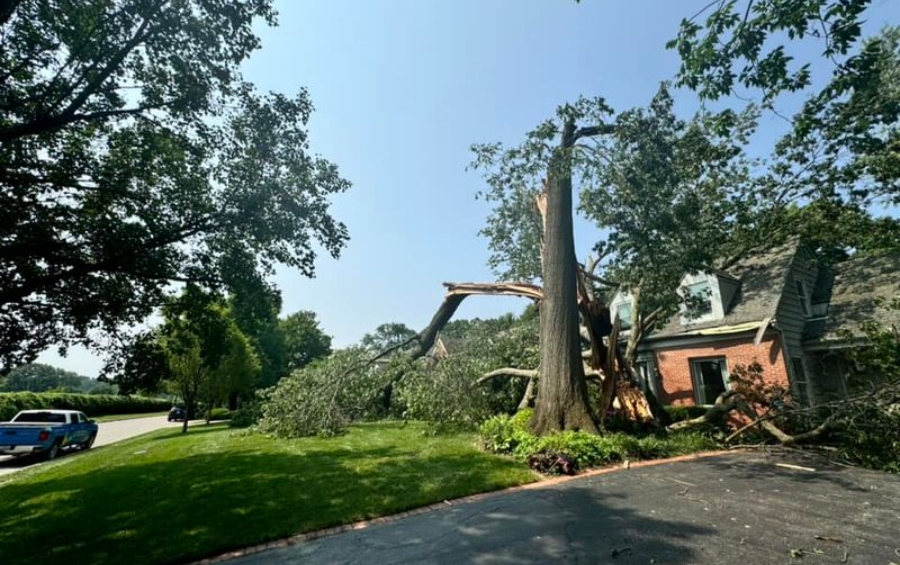
Why Is Professional Assessment Important When Deciding Between Tree Removal vs. Pruning?
There’s no substitute for professional evaluation when deciding between pruning and removal. ISA Certified Arborists detect problems homeowners can’t see, such as interior decay (trees appearing healthy while the trunk rots inside), root problems happening underground, early disease showing subtle symptoms, and even structural defects years before failure actually occurs.
A comprehensive assessment provides:
- Complete property evaluation
- Species-specific recommendations
- Timing guidance
- Treatment options
- Priority ranking
- Written documentation
This investment can save you from wrong decisions, particularly for mature trees in valuable locations.
Frequently Asked Questions About Tree Removal vs. Pruning
Can a tree with a hollow trunk be saved?
Yes, a tree with a hollow trunk can be saved, but it depends on how much sound wood remains. Trees can tolerate surprising amounts of hollowing if the outer shell is thick enough. Arborists use specialized tools to measure remaining wall thickness and determine if it’s adequate. Some hollow trees can be safely preserved for years with proper monitoring, while others need removal.
How much of my tree can be safely pruned in one season?
Generally, you don’t want to remove more than 25% to 30% of a tree’s canopy in a single season. Exceeding this threshold stresses the tree significantly. For major crown reductions, it’s better to spread work over two or three years.
Is it cheaper long-term to prune a declining tree or replace it?
It depends on whether the decline is reversible. If your tree is declining from correctable issues, like nutrient deficiency, drought stress, or treatable disease, pruning is more cost-effective. However, if the decline stems from systemic disease or severe root damage, continued pruning just delays inevitable removal. An ISA Certified Arborist can assess whether your tree’s decline can be reversed.
Does crown reduction shorten a tree’s lifespan?
Properly done, crown reduction doesn’t shorten lifespan and can actually extend it by reducing stress on weak structures. The key is “properly;” this means never removing more than 25% to 30% of the canopy in one season, with cuts made at appropriate branch junctions.
Improper crown reduction (topping or excessive pruning), however, definitely shortens lifespan by creating large wounds and vulnerable decay points.

Ready to Find Out If Your Tree Can Be Saved? Call Arbor Masters Today!
The choice between tree removal and pruning doesn’t have to feel overwhelming. While this guide provides the framework for understanding your options, the reality is that every tree and situation is unique. That’s where working with an ISA Certified Arborist makes all the difference.
With the right expertise and a preservation-first approach, you can feel confident that you’re doing what’s best for your property, your family’s safety, and the trees that make your Quad Cities home special. Contact the Arbor Masters team at 563-355-7508 or request an estimate online today.

Get the latest local news, tree care tips, special offers, and company updates directly to your inbox! It's easy to subscribe and there's no spam - we promise.
"*" indicates required fields


